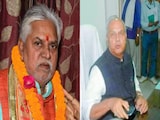Four years before India's formal declaration of Independence from British rule, there was another such proclamation. Netaji Subhash Chandra Bose's Andaman Declaration of Independence was a powerful moment in India's freedom struggle. As India is set to mark its 79th Independence Day, it is a chapter worth revisiting.
On December 29, 1943, in the middle of the Second World War, Subhash Chandra Bose, the leader of the Azad Hind Government and the INA, reached Port Blair, Andaman Islands. Occupied by Japan since 1942, the islands were ceremonially handed over to the Bose-led provisional government. This made them the first Indian territory declared free from British rule under his leadership.
For Bose, this was far more than a political formality. Standing at the Gymkhana Ground, now Netaji Stadium, he unfurled the Tricolour in a symbolic gesture, one that he had vowed to his supporters months earlier in Singapore. He had promised then that the INA would set foot on Indian territory before the year's end. In his speech, he paid tribute to the revolutionaries who suffered in the notorious Cellular Jail, comparing its opening to the fall of the Bastille in France, a moment signalling liberation from tyranny.
Bose's visit was charged with patriotic fervour. He renamed the Andaman Islands Shaheed Dweep (Martyrs' Island) to honour fallen freedom fighters. Similarly, he rechristened the Nicobar Islands as Swaraj Dweep (Freedom Island).
The new names reflected his dream of a free India and a symbolic claim of sovereignty, even though the islands were still under Japanese control.
Strategically located in the Indian Ocean between India, Myanmar and Indonesia, the islands had long been coveted by colonial powers, from the Dutch to the British, and during the war, by Japan.
While the Port Blair ceremony did not lead to immediate independence, Bose's Andaman Declaration marked a rare moment - the unfurling of the Tricolour on the Indian soil before the ultimate and complete freedom in 1947.















